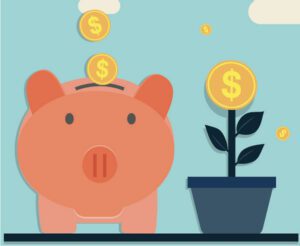24 Sep 2018 Understanding risk tolerance essential
Submitted by Edward Jones
To succeed as an investor, you might think you need to know about the economy, interest rates and the fundamentals of companies in which you’d like to invest. And all these things are indeed important. But it’s most essential to know yourself. Specifically, you need to know how much risk you are willing to tolerate to achieve your goals.
 Of course, you’ve lived with yourself your entire life, so you probably have a pretty good idea of your likes and dislikes and what makes you comfortable or uncomfortable. But investing can be a different story.
Of course, you’ve lived with yourself your entire life, so you probably have a pretty good idea of your likes and dislikes and what makes you comfortable or uncomfortable. But investing can be a different story.
Initially, you may believe you have a high tolerance for risk, but if the financial markets drop sharply, and you see that you’ve sustained some sizable losses (at least on paper – you haven’t really “lost” anything until you sell investments for less than what you paid for them), how will you feel?
If you find yourself constantly fretting over these losses, perhaps even losing sleep over them, you might realize your risk tolerance is not as high as you thought. In this case, you may need to scale back the part of your portfolio devoted to growth in favor of a more balanced approach.
On the other hand, if you believe yourself to have a low risk tolerance, and you start off investing in a conservative manner, you may indeed minimize short-term losses – but you also might find yourself frustrated over the slow growth of your portfolio. So you may decide that being highly risk-averse carries its own risk – the risk of not making enough progress to achieve your long-term financial goals. To reduce this risk, you may need to tilt your portfolio somewhat toward more growth opportunities.
In short, you may have to invest for a while before you truly understand your response to risk. But even then, don’t get too locked in to one approach – because your risk tolerance may evolve over time.
When you are first starting out in your career, and for many years after, you are probably investing primarily to accumulate assets for retirement. Consequently, you may need to include a relatively high proportion of growth-oriented vehicles, such as stocks, in your portfolio. While stock prices will always fluctuate, you will have many years, perhaps decades, to overcome short-term losses, so you can possibly afford to take on a greater risk level in exchange for the potentially higher returns offered by stocks and stock-based investments.
However, things can change once you reach retirement. At this stage of your life, your overall investment focus may shift from accumulation to income. This means you will need to start selling some investments to boost your cash flow – and you won’t want to sell when prices are down. (Remember the first rule of investing: “Buy low and sell high.”)
To help avoid these “fire sales,” you may want to adjust your investment mix by adding more income-producing vehicles and reducing your holdings in growth-oriented ones. By doing so, you will be lowering your overall risk level. Keep in mind, though, that even in retirement, you will need some exposure to growth investments to help you stay ahead of inflation.
Become familiar with your own risk tolerance – it can play a big role in your investment decisions.








